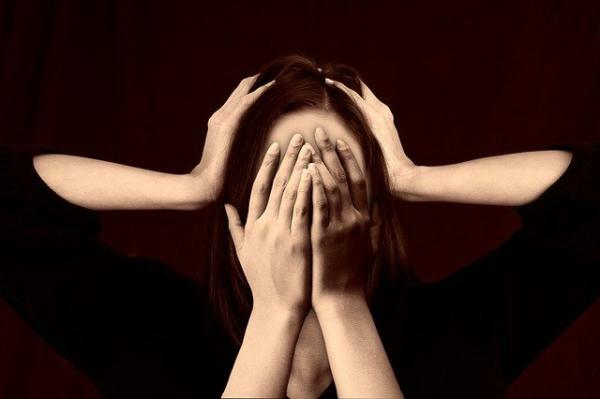
Human beings have always seen the need to impose social norms to maintain harmony in the interrelationships they develop with other people. For this reason, shame is one of the emotions that, at some point, we all feel. It is an innate and evolved emotional state that serves as a social security mandate.
Shame can be positive or negative, depending on the circumstances, since shame can be felt in a timely manner or it can even become a pathological situation. So that you have all the information you need on this interesting topic, in this Psychology-Online article, we will explain what is shame in psychology. In addition, we will tell you what types of shame exist so that you know how to differentiate their characteristics very well.
Index
- what is shame
- why do we feel ashamed
- types of shame
What is shame?
According to psychology, shame is a feeling of humiliation that arises with perception that we act incorrectly or unseemly. According to the APA Dictionary of Psychology
Its etymology comes from the Latin word “verecundía”, which translates as unseemly, disturbing, or humiliating. Consequently, the meaning of shame has to do with the encouragement produced by inappropriate actions, whether personal or others. For example, it is common to feel ashamed for something inappropriate that an acquaintance, relative or loved one does, or for some act committed by oneself. Discover why do we feel embarrassed.
In other words, shame is a natural secondary emotion linked to self-esteem and that leads us to hide our faults when we think that we are not acting correctly. His main function is to regulate human behavior.
How Shame Manifests
When we are ashamed, our body manifests a series of physiological symptoms. We see them below:
- Muscle tension.
- Reddish discoloration on the face.
- Drop arms.
- Need to flee from the place where we are.
Why do we feel shame?
What is the cause of shame? It is usual to experience when social norms are violated or the agreements that maintain coexistence. In fact, when that happens, they often look for a way to escape from that situation as an innate survival response. In this article you will see what is the survival instinct in psychology.
Likewise, shame immediately boosts the parasympathetic nervous system, which is responsible for inhibiting behaviors that we consider inappropriate. Added to this, the shame is activated due to the following factors:
- The feeling or fear of failure.
- The fear of not being accepted socially.
- Lack of identity.
- childhood trauma.
- Fear of making mistakes that show certain disabilities or limitations.
- The presence of emotional blocks.
- perfectionism excessive or very high expectations.
- Insecurity in social relationships.
- Admiring other people excessively and considering them better than oneself.
- Excess vulnerability.
Above all, it is essential to learn to manage this emotional state in order to not fall into social isolation or destructive self-criticism which is highly detrimental to having good self-esteem.

types of shame
Shame is often discussed as a single emotion. However, according to their manifestations and differences, there are the following types of shame:
- pure shame: is the most general type of shame. It is one that is triggered through a situation of reparation or ignominy towards us or towards other people. The reactions are very obvious, therefore they cannot be hidden or denied. Coupled with that, it is a type of shame that arises as a consequence of a strong perception of dishonor in the one who has caused it.
- embarrassment: It is also known as vicarious shame. It occurs when an individual commits a fault or inappropriate action and we experience the emotion of shame, as if we had done it ourselves. It is triggered due to the mechanisms of empathy because we project the feeling onto others, that is, it is an indirect shame.
- false shame: as its name suggests, it is a shame that is not really experienced, but is feigned. It can arise when someone is accused of actions they did not commit and still experiences the shameful emotion. Likewise, it refers to when embarrassment is feigned to empathize with a social group and, really, there is no inner sensation of emotion.
- shame of shame: refers to feeling ashamed of being ashamed. In other words, it means that people are aware of their emotion and again experience shame for what they do. It is also known as secret shame, since it is an inner feeling of recognizing what is happening.
- toxic shame: It is one of the most complex and delicate types of shame, since it includes a trauma or aggression involved. It is a harmful and toxic shame that individuals experience when subjected to abuse or harassment, so it does not respond to an innate reaction, but rather a defensive one. Individuals who experience this type of shame have a dissociation that limits their reactions. Therefore, it is essential to help them overcome the situation.
This article is merely informative, in Psychology-Online we do not have the power to make a diagnosis or recommend a treatment. We invite you to go to a psychologist to treat your particular case.
If you want to read more articles similar to What is shame in psychology, we recommend that you enter our category of Social psychology.
References
- APA Dictionary of Psychology. (2022). Definition of Shame. https://dictionary.apa.org/shame
Bibliography
- Matt S. Treeby et al. (2016). Shame, guilt, and facial emotion processing: Initial evidence for a positive relationship between guilt proneness and facial emotion recognition ability. Cognition and emotion, vol. 30, no. 8, pages 1504–1511; December 2016.
- Shame and guilt: the good, the bad and the ugly. Video conference by June Tangney. Presented by George Mason University and ResearchChannel: https://youtu.be/febgutDYP7w


